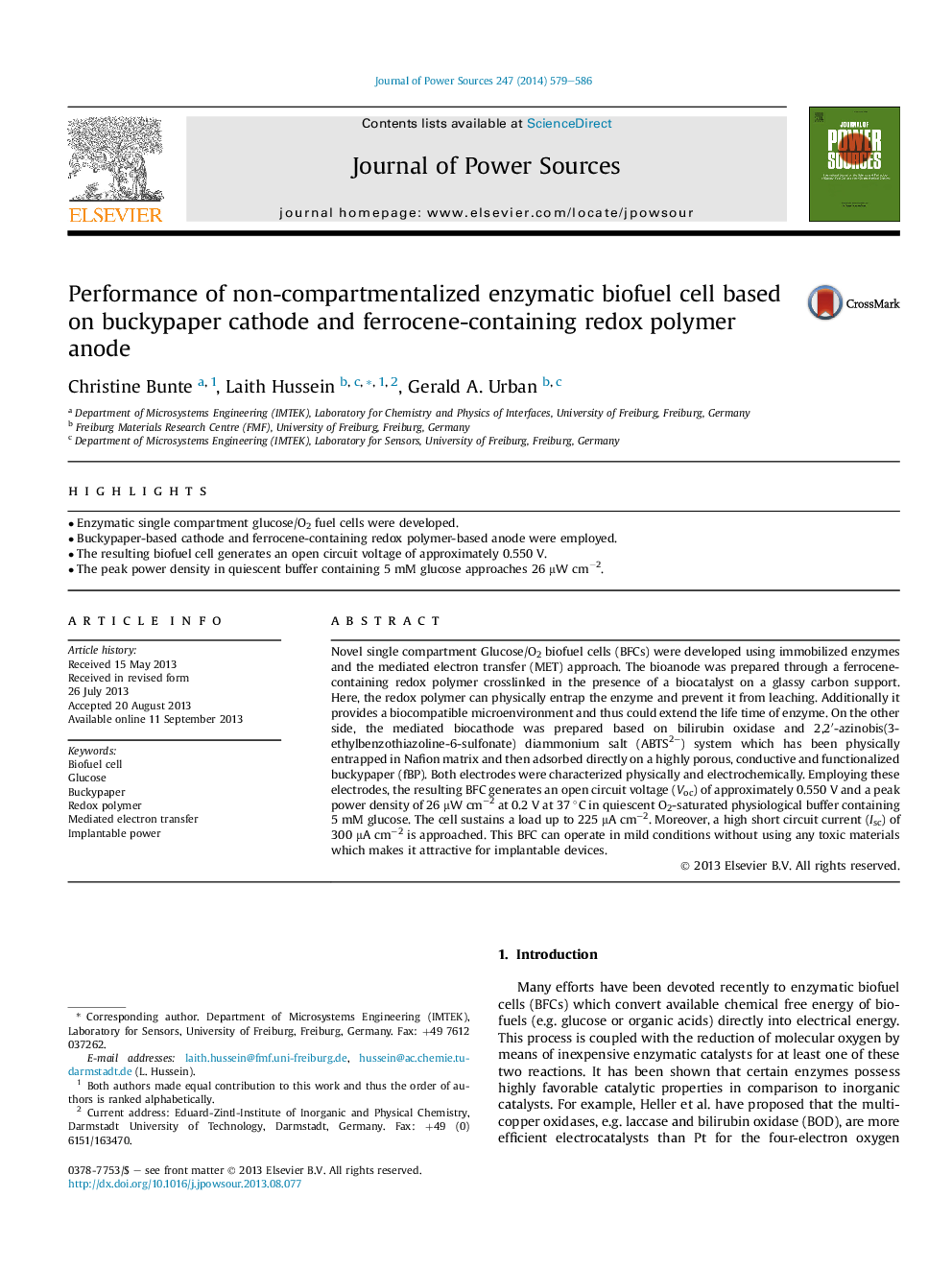| Article ID | Journal | Published Year | Pages | File Type |
|---|---|---|---|---|
| 7738462 | Journal of Power Sources | 2014 | 8 Pages |
Abstract
Novel single compartment Glucose/O2 biofuel cells (BFCs) were developed using immobilized enzymes and the mediated electron transfer (MET) approach. The bioanode was prepared through a ferrocene-containing redox polymer crosslinked in the presence of a biocatalyst on a glassy carbon support. Here, the redox polymer can physically entrap the enzyme and prevent it from leaching. Additionally it provides a biocompatible microenvironment and thus could extend the life time of enzyme. On the other side, the mediated biocathode was prepared based on bilirubin oxidase and 2,2â²-azinobis(3-ethylbenzothiazoline-6-sulfonate) diammonium salt (ABTS2â) system which has been physically entrapped in Nafion matrix and then adsorbed directly on a highly porous, conductive and functionalized buckypaper (fBP). Both electrodes were characterized physically and electrochemically. Employing these electrodes, the resulting BFC generates an open circuit voltage (Voc) of approximately 0.550 V and a peak power density of 26 μW cmâ2 at 0.2 V at 37 °C in quiescent O2-saturated physiological buffer containing 5 mM glucose. The cell sustains a load up to 225 μA cmâ2. Moreover, a high short circuit current (Isc) of 300 μA cmâ2 is approached. This BFC can operate in mild conditions without using any toxic materials which makes it attractive for implantable devices.
Related Topics
Physical Sciences and Engineering
Chemistry
Electrochemistry
Authors
Christine Bunte, Laith Hussein, Gerald A. Urban,
